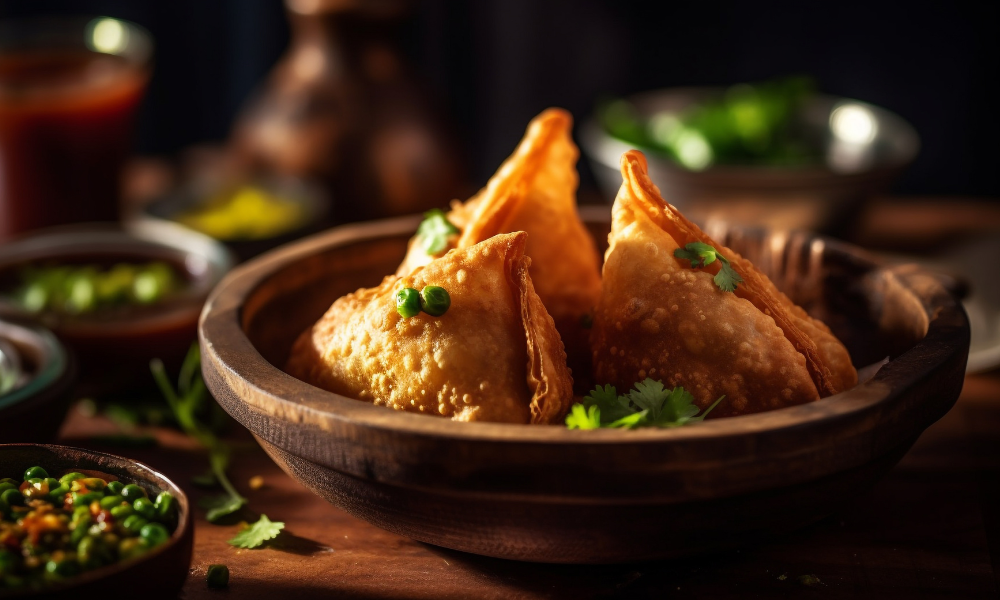Culinary Tourism in India: Savoring the Diverse Flavors of the Country
 Step into a world where flavors dance on your palate, tantalizing your taste buds with every bite. Welcome to the vibrant and diverse culinary landscape of India, a country rich in history, culture, and gastronomic delights. Culinary tourism is not just about exploring new destinations; it’s about embarking on a sensory journey that allows you to savor the unique flavors and aromas of different regions.
Step into a world where flavors dance on your palate, tantalizing your taste buds with every bite. Welcome to the vibrant and diverse culinary landscape of India, a country rich in history, culture, and gastronomic delights. Culinary tourism is not just about exploring new destinations; it’s about embarking on a sensory journey that allows you to savor the unique flavors and aromas of different regions.
What is culinary tourism?
If you’re looking to experience a destination in a unique way, then culinary tourism is for you. By exploring the local food scene, you can gain invaluable insights into its culture and heritage. From sampling street food at bustling markets to participating in cooking classes with expert chefs, it’s an opportunity to learn about the traditions, history, and techniques behind each recipe. You’ll also get to savor authentic flavors and regional specialties that represent the diversity of ingredients used across India. In doing so, you’ll uncover how climate, geography, cultural influences, and historical events all contribute to its distinctive cuisines. So whenever you plan your next trip, remember to bring an appetite with you! Prepare for a delectable journey of exploration where each bite will offer a glimpse of the rich and complex Indian cuisine.
The different types of cuisine in India
From the fiery dishes of the North to the aromatic spices of the South, India is a land of culinary wonders that provides an array of flavors and experiences. Northern India boasts rich and hearty meals cooked with ghee (clarified butter) and bold spices like cumin, coriander, and cardamom. Bengali cuisine takes pride in its seafood and sweet dishes such as macher jhol (fish curry), shorshe ilish (hilsa fish in mustard sauce), and rasgulla (spongy sweet balls soaked in syrup). The vegetarian specialties of Gujarati cuisine are also something to behold – from dhokla (steamed chickpea flour cakes), khandvi (gram flour rolls), to undhiyu (vegetable stew). In Kerala, coconut milk along with curry leaves, tamarind paste, and a host of freshly-caught seafood items make up some of their most iconic dishes like appam with stew or Malabar fish curry. Rajasthan brings forth its royal flavors through creations such as dal baati churma(lentil dish served with baked wheat bread dipped in clarified butter) showcasing the use of dried beans, lentils along nuts.
Famous dishes from each region of India
India is a country rich in culinary diversity, with each region boasting its own unique and flavorful dishes. From the spicy curries of the south to the hearty kebabs of the north, Indian cuisine offers a tantalizing journey for food enthusiasts.
In North India, you can savor famous dishes such as butter chicken and naan bread from Punjab, or indulge in aromatic biryanis and kebabs from Lucknow. Moving towards the west, Gujarat is known for its vegetarian delicacies like dhokla and khandvi.
Traveling down to South India, you’ll experience a burst of flavors with dosas from Tamil Nadu and idlis from Kerala. And let’s not forget about the iconic Hyderabadi biryani – a fragrant rice dish layered with succulent meat or vegetables.
In Eastern India, Bengal steals the show with its fish curries like macher jhol and delectable sweets like rasgulla. The northeastern states offer unique dishes like momos from Sikkim and bamboo shoot curry from Assam.
In Western India, Maharashtra serves up lip-smacking street food delights such as vada pav and pani puri. Goa entices seafood lovers with its fiery vindaloo curry made with local spices.
These are just a few examples of the incredible variety that awaits you on your culinary adventure through India. Each region has its own distinct recipes passed down through generations – an expression of culture on every plate! So pack your bags (and your appetite) because this gastronomic journey will leave you craving more!
The impact of globalization on Indian cuisine
Globalization has had a major impact on Indian cuisine in recent years. Cultural exchange has resulted in the emergence of distinctive dishes blending East and West, such as butter chicken pizza or masala pasta. Furthermore, it has made a variety of international ingredients and cooking techniques easily available in India. Additionally, Indian cuisine’s increasing worldwide popularity can be attributed to globalization. However, it also presents some potential pitfalls, such as the risk that traditional cooking methods may be compromised for mass production purposes.
Culinary tourism in India today
Culinary tourism in India today is booming, with food lovers from around the world flocking to experience the diverse flavors of this rich and vibrant country. From street food stalls to upscale restaurants, there is something for every palate.
Exploring India’s cuisine can be an incredible journey, with many chances to experience unique regional flavors. From the spicy curries of Punjab to the seafood delicacies of Kerala, visitors can enjoy a range of traditional dishes. For an immersive experience, there are farm-to-table dining experiences, cooking classes, and food festivals where you can interact with local chefs and sample a variety of dishes. Social media has also been instrumental in creating interest in Indian cuisine among travelers, with bloggers and influencers documenting their mouthwatering explorations on platforms like Instagram. As globalization continues to shape the culinary landscape of India, fusion cuisine is also becoming popular – blending traditional tastes with international influences. With so much on offer for foodies looking for an unforgettable adventure, it’s clear that culinary tourism has great potential in India.



